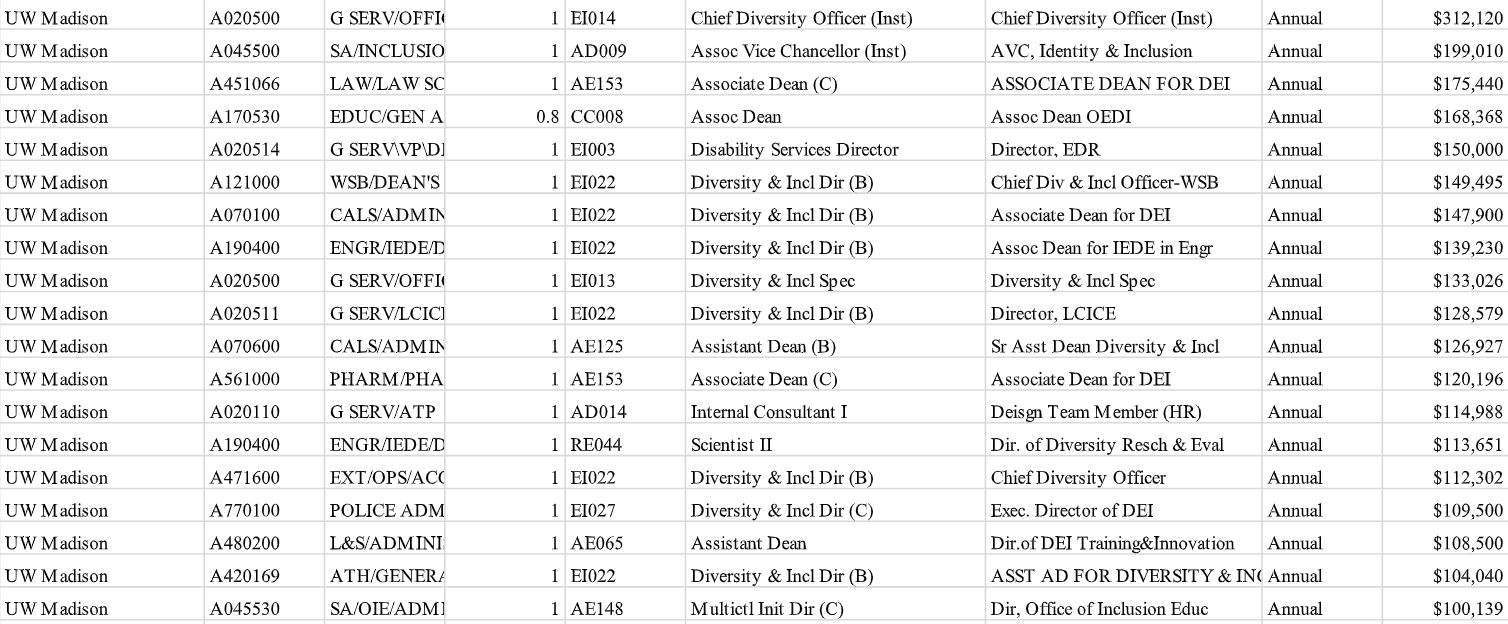
In contrast, teacher-student ratio has remained stagnant
The University of Wisconsin Madison employs roughly one administrator for every four undergraduates, and has grown its administration and support staff by 23 percent since 2013, according to an analysis conducted by The College Fix.
In contrast, the ratio of undergrads to teaching and instructional staff has largely stayed the same since 2013-14, hovering at about 106 per 1,000 students.
In 2013, UW-Madison employed 7,186 administrators and support staff employees, which includes student and academic affairs divisions, IT, public relations, administrative support, maintenance, and legal and other non-academic departments, which was 251.5 administrators per 1,000 students.
By the 2021-22 school year, for which the most recent data are available, the university had bumped the number of administrative staff to 8,817, according to the analysis, which used data provided by UW-Madison to the federal Integrated Postsecondary Education Data System. The number of administrators per 1,000 students increased to 275, representing a 9.3 percent increase compared to 2013.
Of the total number of employees added to the payroll since 2013, about 350 were for teaching and instructional positions, even as its student population swelled, while the rest, roughly 1,600 positions, went to administrative support.
In an email to The College Fix, UW-Madison’s media relations office said many new administration positions were added in 2019, when the UW System transitioned University of Wisconsin-Extension and Wisconsin Public Media radio and television employees to UW-Madison.
Besides this, many new jobs created in recent years were focused on diversity, equity, and inclusion.
For example, in 2019, UW-Madison created the position of associate dean for equity, diversity and inclusion in its School of Education, and in 2021, the University of Wisconsin Law School created the position of associate dean of diversity, equity, and inclusion.
UW-Madison’s DEI division oversees Inclusion Education, an office operating in Student Affairs that seeks to “elevate and prioritize diversity, equity, and inclusion for all students at UW-Madison.” Inclusion Education was established in 2020 and houses seven staff members.
Currently UW-Madison’s DEI office lists nearly 100 staffers on its roster. The average DEI salary comes in at $100,000 annually, according to public records.
UW-Madison also employs high-level DEI officials in its various schools, colleges, and divisions who are responsible for “addressing campus climate issues and working collectively to foster a diverse and equitable campus environment.”
For example, the School of Veterinary Medicine, School of Medicine and Public Health, School of Pharmacy, School of Business, Graduate School, College of Engineering, College of Letters & Science and College of Agricultural and Life Sciences all employ DEI deans.
What are these deans up to? For one, the College of Agriculture and Life Sciences announced in 2021 that its staff will be required to undergo what it calls “annual professional development” in DEI and anti-racism training.
UW-Madison also employs campuswide DEI deans, including LaVar Charleston, its chief DEI officer, whose salary is $312,000 annually, according to public records, and 18 other diversity officers make more than $100,000.

The university also maintains multiple DEI committees, each committed to different “minorities.” These include the Committee for Women in the University, Committee on Disability Access & Inclusion, LGBTQ+ Committee, Campus Diversity Representatives, Equity & Diversity Chairs Committee, and Immigration & International Issues Committee.
In November, UW-Madison hosted an expansive, two-day DEI summit that featured an anti-Israel artist and ignored the topic of antisemitism. Its health services division also offers a step-by-step guide for students to gender transition.
Despite herculean efforts and costs to advance DEI at UW-Madison, there has been no improvement in the campus climate since 2016, students have reported. Mental health issues are so tense that in 2021 the university hired nine additional counselors, three of whom to “exclusively serve students of color.”
The steep and growing number of DEI staff and programming not only at UW-Madison but systemwide — which has come with more racial division than less — prompted the Republican-controlled state legislature in June to pull out $32 million from the UW System budget, the estimated amount the system spends on DEI efforts each year.
But University of Wisconsin campus leaders have not cut diversity, equity and inclusion from their campuses despite the budget cut.
Most recently, in October, the state legislature withheld pay raises for Universities of Wisconsin employees to up the ante in the battle over the system’s DEI spending.
“Currently, the only authority that the legislature has over the UW System is the power of the purse string. The only action of the legislature that brings fear to the hearts of DEI socialists running our public university system is cutting their funding,” state Sen. Steve Nass stated during the budget battle.
“Change will only occur in the UW System when Republicans stop blindly funding them in the hopes they might like us someday.”
MORE: Wisc. universities keep DEI positions despite GOP gutting budget by $32 million
IMAGE: Young Ryand / Shutterstock





Please join the conversation about our stories on Facebook, Twitter, Instagram, Reddit, MeWe, Rumble, Gab, Minds and Gettr.